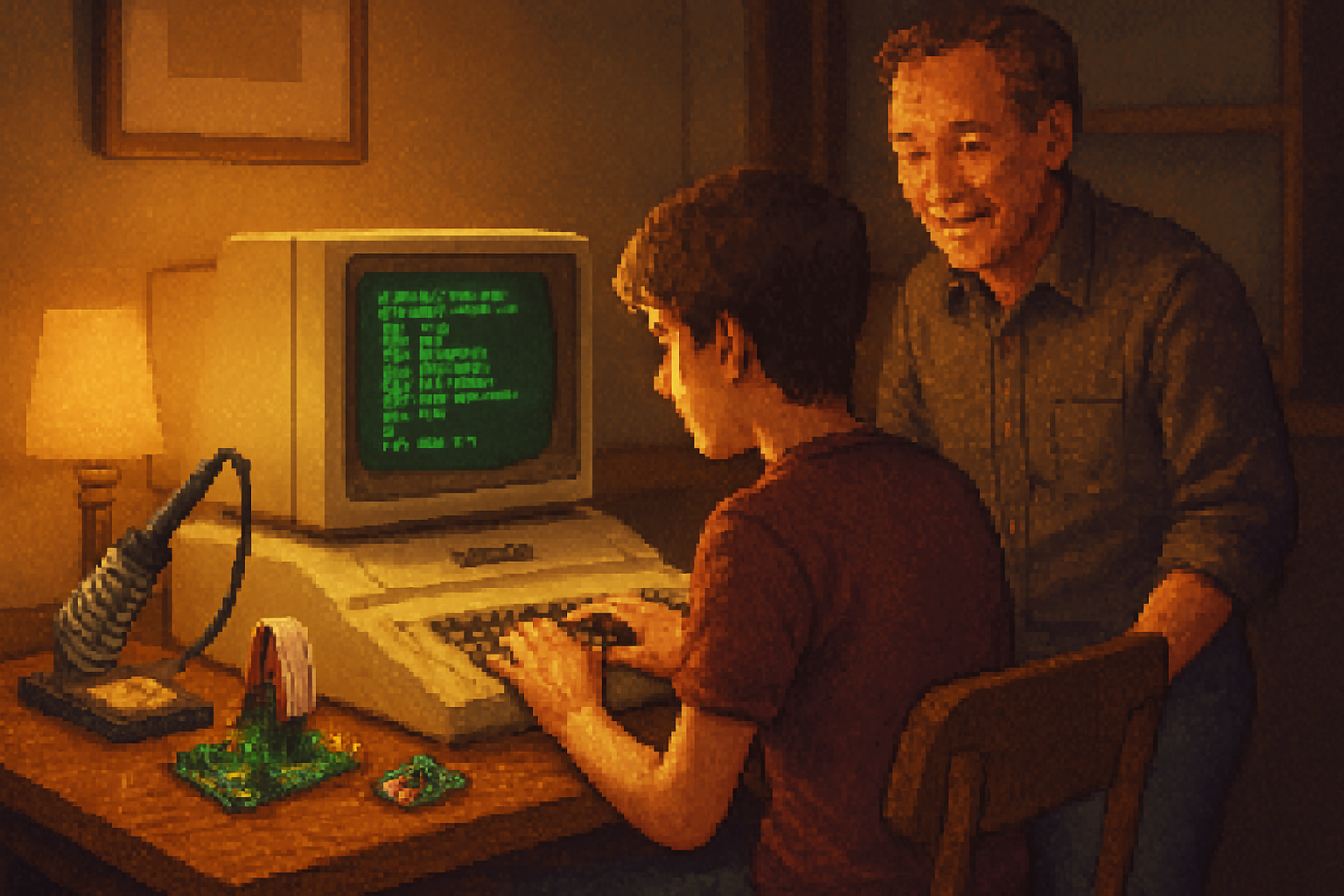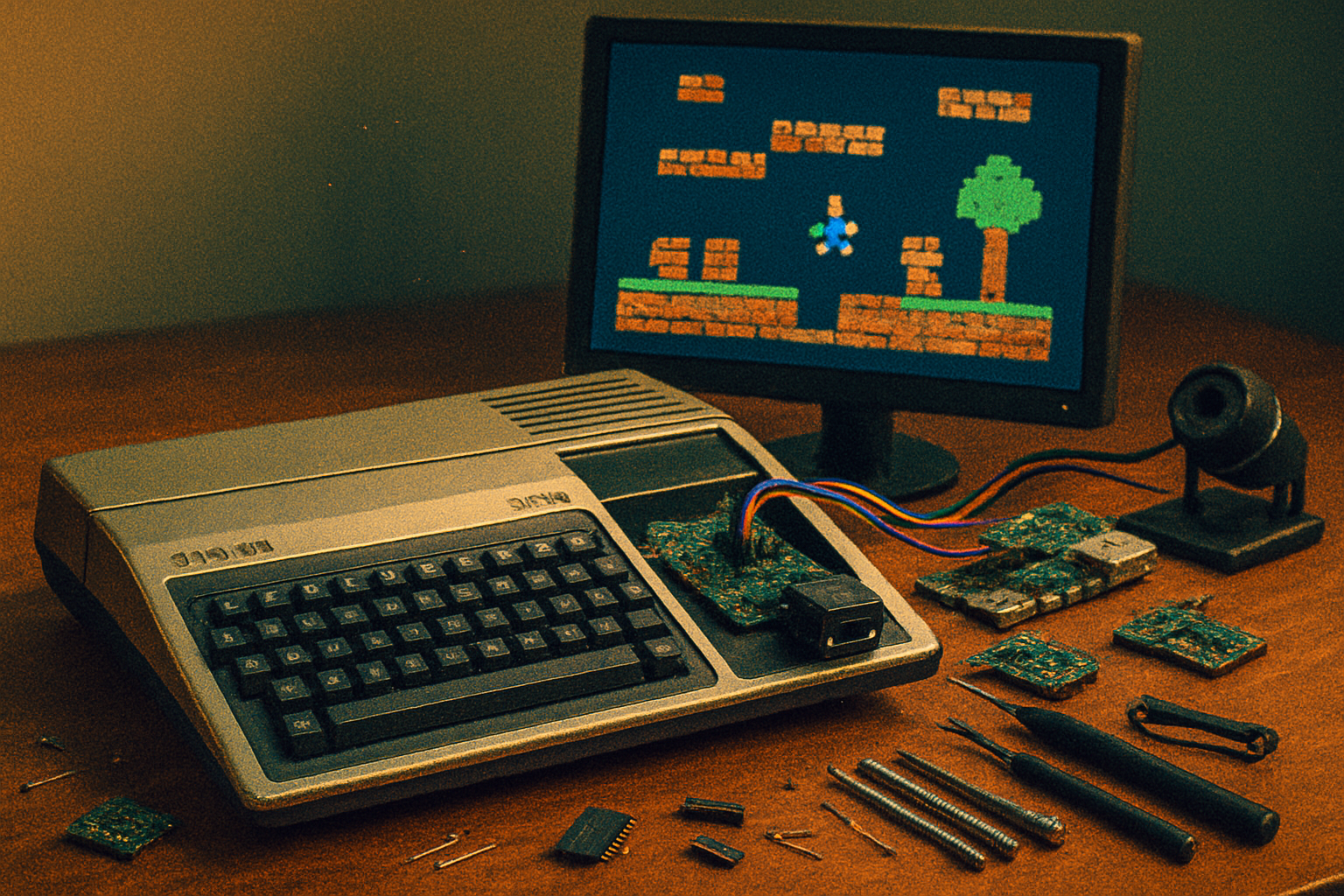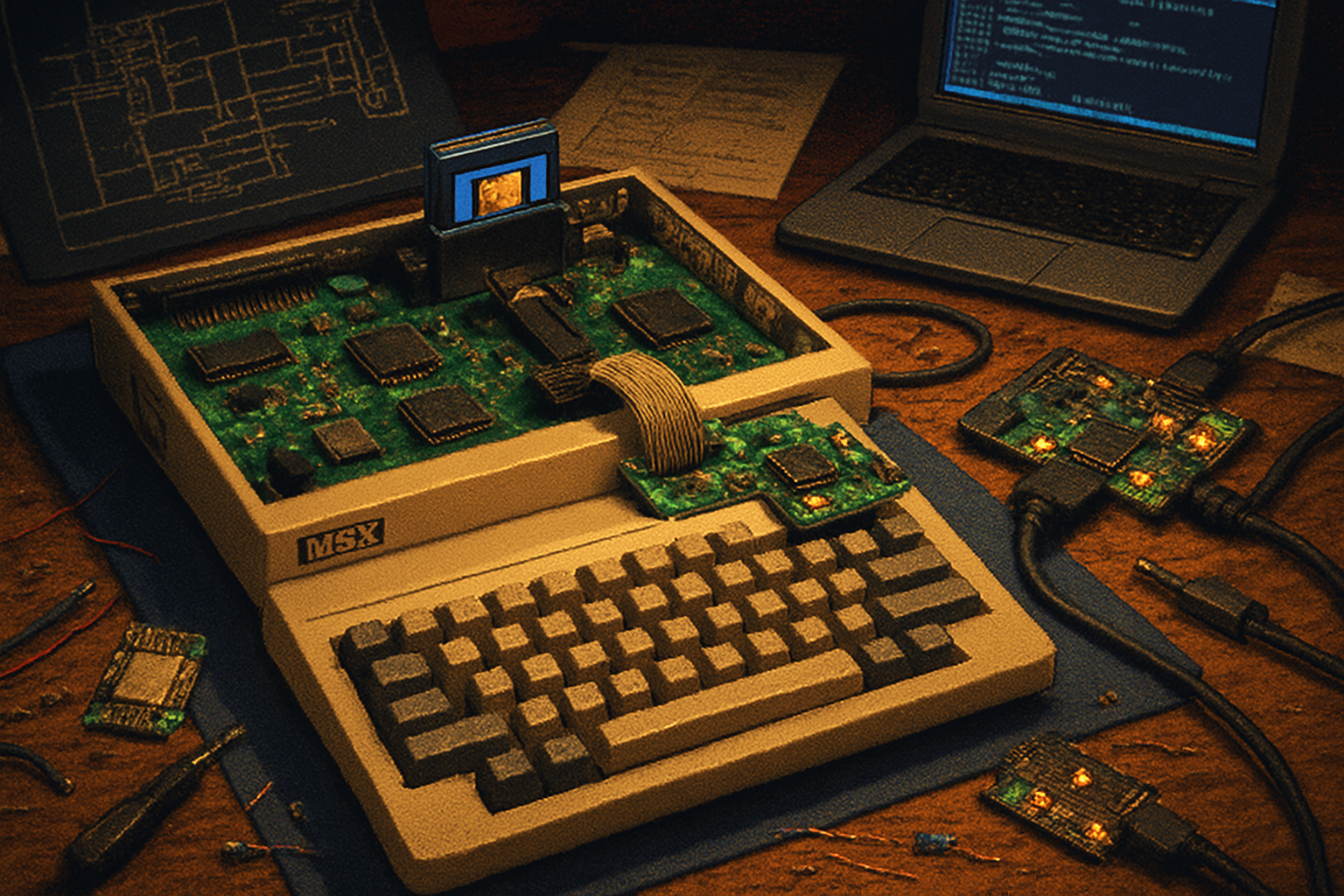· retrotech · 5 min read
The Apple II Renaissance: Why Retro Computing is Making a Comeback
Once obsolete, the Apple II is now a proving ground for modern developers and hobbyists - a crash course in constraint-driven creativity, hardware hacking, and the pleasures of making something that actually fits in RAM.

I watched a teenager at a weekend maker fair type a one-line BASIC program into an Apple II. She hit RETURN. The machine beeped, the little monochrome text scrolled, and she laughed - not because the graphics were pretty, but because in that moment she had made a machine obey a tiny command. The joy was irreducible.
That scene - young hands on a thirty‑plus‑year‑old keyboard - is the simplest evidence of a trend that looks less like nostalgia and more like a small cultural revolution: the Apple II renaissance.
Why the Apple II, of all things?
The Apple II was never the most sophisticated machine in hindsight. It shipped in 1977, popularized home computing, and introduced a generation to BASIC, spreadsheets, and the notion that a tiny box could do useful things. But why are modern developers, hardware hackers, and artists returning to it now?
Think of the Apple II as a bicycle for the mind: no power steering, no GPS, no absurd number of built‑in safety features. You learn balance fast.
1) The charm of constraint
Constraints are the original productivity hack. Modern cloud instances give you effectively infinite resources; the Apple II gives you a few kilobytes of memory and a 6502 CPU. That scarcity is clarifying.
- Constraints force design decisions that teach fundamentals - memory layout, cycles, I/O timing.
- You write tighter code. You reason about data. You get discipline.
This is why people who want to be better engineers deliberately program in assembly on 8‑bit machines. The lessons stick.
2) Hardware is back in fashion
We used to think of software and hardware as neatly separated. The retro scene laughs at that vanity. Apple II machines are hardware you can open, probe, and modify without signing an NDA.
- Hobbyists build modern I/O cards, SD/CF storage solutions (e.g., CFFA3000), and Wi‑Fi bridges.
- FPGA enthusiasts recreate Apple II behavior in gates, not emulation, with projects on platforms like MiSTer.
This is hands‑on engineering in a way few consumer devices allow any more.
3) Education and entry points
The Apple II is an approachable platform for learning computing history and fundamentals. Schools used Apple IIs for decades. The same design that taught BASIC decades ago teaches systems thinking now.
- Introductory lessons in assembly or AppleSoft BASIC build intuition that higher‑level languages often obscure.
- Emulators like AppleWin let newcomers experiment with minimal friction before they touch real hardware.
4) Preservation and cultural memory
People are waking up to how fragile digital artifacts can be. Preserving Apple II software - games, tools, floppy images - is a form of cultural archaeology.
- Archives like the Apple II on Wikipedia and mirrored collections (e.g., mirrors.apple2.org.za) are crucial.
- Communities collect, digitize, and keep the history usable rather than dusty.
5) Aesthetics, identity, and counterculture
There’s a tasteful bitterness to modern tech: slick interfaces, endless onboarding, attention‑maximizing design. The Apple II offers a refuge. Its interfaces are honest: text, tiles, sprites you can count. This appeals to people tired of feature bloat and corporate UX theater.
How people are engaging with the platform today
The renaissance isn’t just nostalgia. It’s a living, active ecosystem of hardware mods, new software, and creative projects.
Emulation and development
- AppleWin (Windows) and other emulators let developers run and test software quickly (AppleWin on GitHub).
- Development tooling includes cross‑assemblers, debugging tools, and disassemblers. The 6502 community keeps documentation and tutorials fresh.
FPGA and re‑implementations
- MiSTer and similar FPGA platforms reproduce Apple II behavior at gate level, offering faithful timing and hardware quirks that software emulators gloss over (MiSTer FPGA).
Modern peripherals and storage
- Devices like the CFFA3000 and the Floppy Emu replace floppies with compactflash or SD card images, making old machines usable without a pile of aging disks.
New software, games, and demoscene
- Developers still write new games, utilities, and demos - often as programming competitions or art pieces. The retro demoscene produces work that deliberately exploits hardware idiosyncrasies for beauty.
Community and events
- Online forums (AppleFritter, Reddit’s r/appleii), mailing lists, and local meetups provide mentorship, parts, and a sense of continuity.
- Physical shows and swap meets keep the parts circulating, and they are where teenagers and retirees meet over the same keyboard.
What modern technology is learning from the past
This isn’t merely sentimentality. The Apple II rebirth nudges modern tech in practical ways.
- Minimalism breeds robustness. Startups and embedded teams borrow that lesson - smaller state, less magic, easier to reason about.
- Rethinking interfaces. Retro UIs remind designers that clarity beats ornamentation when resources are tight.
- Hardware openness. Hobbyist hardware and repairability movements get a boost from the DIY ethos practiced on older machines.
There’s also a quieter influence: people who learn low‑level programming on 8‑bit machines are likelier to appreciate systems architecture, which raises the bar for the next generation of engineers.
Getting started (if you want in)
If you feel like poking the bicycle of the mind, here’s a short toolkit:
- Try an emulator first: AppleWin is a good Windows start.
- Read about the platform: Apple II on Wikipedia and 6502.org.
- If you want hardware - look at Floppy Emu (
- Join communities: AppleFritter, Reddit’s r/appleii, and other archival sites.
A vignette to finish
A friend once soldered a ribbon cable in a hot church basement while a group of strangers debated whether the Apple II’s sound came from the cassette interface or the video card. They were not nostalgists mourning a lost past. They were converts to a philosophy: making something yourself sharpens your judgement about the things you don’t make yourself.
The Apple II renaissance isn’t a museum exhibition with a velvet rope. It’s a workshop, noisy and slightly dangerous, where people still learn the taste of a machine that will do exactly what you tell it to - and nothing else. That clarity is the appeal, and in a world of infinite layers of abstraction, it’s a bracing, necessary medicine.
References
- Apple II - Wikipedia: https://en.wikipedia.org/wiki/Apple_II
- Computer History Museum collection: https://computerhistory.org/collections/catalog/102646769
- AppleWin emulator: https://github.com/AppleWin/AppleWin
- 6502.org (community and documentation): https://www.6502.org
- CFFA3000: https://cffa3000.com
- Floppy Emu: https://www.bigmessowires.com/floppy-emu/
- MiSTer FPGA: https://misterfpga.org



